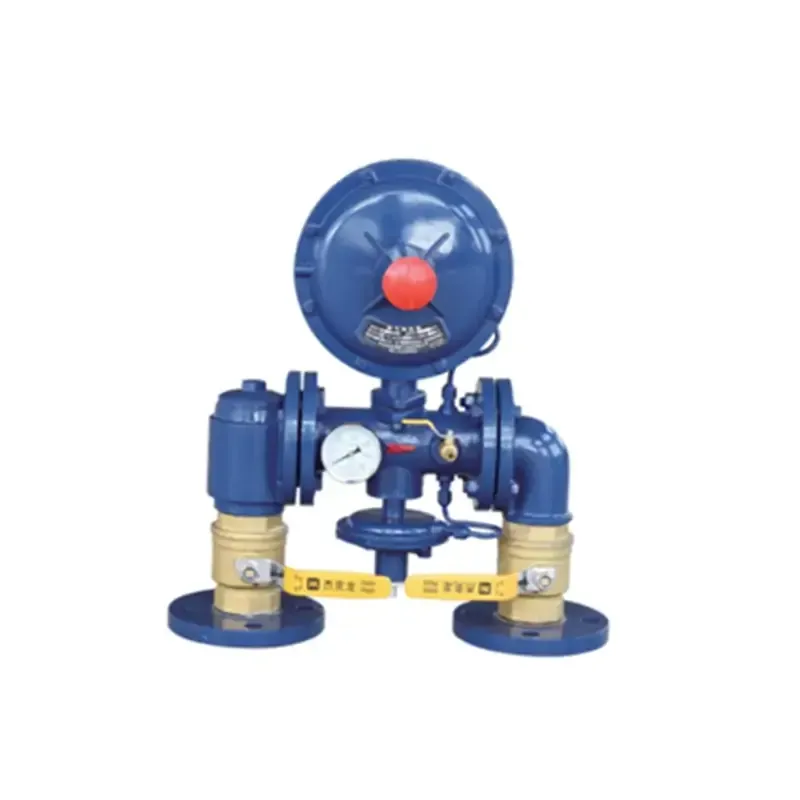
10 月 . 14, 2024 13:14
Back to list
relief valves
Understanding Relief Valves A Critical Component in Pressure Management
Relief valves play a vital role in various industries, ensuring safety and operational efficiency in systems where pressure needs to be carefully managed. These valves are designed to automatically open at a predetermined pressure to protect systems from overpressure conditions, which can lead to catastrophic failures. In this article, we will explore the function, types, and applications of relief valves, as well as their importance in maintaining the integrity of industrial processes.
What are Relief Valves?
Relief valves are safety devices installed in bulk storage or process equipment to prevent pressure from exceeding safe limits. When the pressure within a system reaches a specific threshold, the relief valve activates, allowing excess pressure to escape. By releasing this pressure, the valve helps to prevent damage to equipment and, more importantly, protects the safety of personnel working in or around the system.
Types of Relief Valves
There are several types of relief valves, each designed for specific applications. The most common types include
1. Pressure Relief Valves (PRV) These valves are primarily used in liquid service systems. They open to relieve excess pressure when it exceeds the set point, allowing liquid to discharge until the pressure is brought back to a safe level.
2. Safety Relief Valves (SRV) Similar to PRVs, safety relief valves are used for gases or steam. They provide a quick response to overpressure conditions and are designed to close tightly once normal pressure is restored.
3. Pilot-Operated Relief Valves These valves utilize a pilot mechanism to sense system pressure and control the main valve. They are often more efficient for larger systems since they can handle higher flow rates while maintaining tight sealing.
relief valves

Applications of Relief Valves
Relief valves are essential in numerous industries, including oil and gas, petrochemical, pharmaceutical, and water treatment facilities. In the oil and gas industry, for instance, relief valves are used in various applications, from pipelines to storage tanks, ensuring that pressure fluctuations do not lead to leaks or explosions. In pharmaceutical manufacturing, accurate pressure control is critical for product safety and efficacy; relief valves help maintain the necessary pressure conditions for sensitive processes.
Moreover, in the water treatment sector, relief valves are crucial for managing pressure in hydraulic systems and ensuring safe operation in treatment plants. Their ability to prevent potential hazards helps protect equipment, maintain environmental compliance, and guarantee the safety of the workforce.
Importance of Regular Maintenance
While relief valves are critical for safety, their effectiveness relies heavily on proper maintenance. Regular testing and inspection are essential to ensure that these valves function correctly when needed. Factors such as corrosion, contamination, and wear can impair the operation of relief valves over time. Therefore, implementing a routine maintenance schedule is crucial to identify potential issues, replace worn components, and ensure compliance with safety standards.
Conclusion
In conclusion, relief valves are a crucial component in pressure management across various industries. They provide a safety net against overpressure conditions, protecting both equipment and personnel from potential hazards. With various types of relief valves designed for specific applications, their effective implementation can significantly enhance system reliability. However, to maintain their functionality, regular maintenance and testing are essential. As industries continue to evolve, the role of relief valves in ensuring operational safety and efficiency remains more significant than ever. Understanding their importance and operational principles is key to achieving safe and effective industrial processes.
Next:
Latest news
-
Unlocking The Quality Gas Pressure ReducersNewsNov.01,2024
-
The Role of Gas Pressure Reducing StationsNewsNov.01,2024
-
The Importance and Functionality of Safety Relief ValvesNewsNov.01,2024
-
The Essential Role of Safety Valves in Natural Gas ApplicationsNewsNov.01,2024
-
The Essential Role of Gas Pressure RegulatorsNewsNov.01,2024
-
Enhance Your Premium Gas FiltersNewsNov.01,2024

